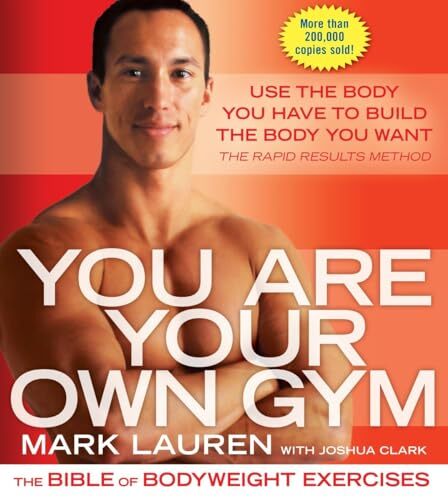
The good
-
Badass intro. Talks about how humans have trained with bodyweight (with no gym) since ancient times (e.g., ancient Greek Olympic athletes and Spartan warriors) through today, where the author trains special operations forces.
-
A decent list of bodyweight exercises. I’ve been working out for years and still found quite a few new ideas in here, especially around how to do at home some exercises I thought always required a gym.
-
Includes not only a list of bodyweight exercises, but also a basic background of exercise, anatomy, diet suggestions, motivation to start working out, and well-thought-out workout plans for trainees of all levels. This makes it a great all-around intro to improving your fitness.
-
Brings up some interesting research and data points. For example: 20 minutes of HIIT can burn more calories than 40 or even 60 minutes of “standard” cardio, as HIIT burns calories for many hours after the workout; the difference between being “satisfied” with a meal and feeling “full” is about 1,000 calories and the difference between feeling “full” and “stuffed” is an additional 2,500 calories! I’m going to have to do some research to check these claims.
The not so good
-
While the list of exercises is good, it’s oddly missing many well-known and useful bodyweight exercises. For example, the book doesn’t cover L-sits, front or back levers, vertical jump, broad jump, running, sprinting, muscle-ups, clapping pull-ups, rope climbs, and many others.
-
The book takes an overly negative view on working out at the gym. Yes, there are certainly some advantages to doing bodyweight exercises, and being able to do them anywhere, but that’s not the same as saying gyms are bad! Depending on your goals and situation, the gym can be far more effective.
-
Similarly, the book takes an overly negative view of using training with external resistance. In fact, the author takes every opportunity to talk about the advantages of bodyweight training over using machines or dumbbells, but oddly never mentions barbells, nor the fact that using external resistance has many advantages of its own. For example, there are some exercises that you can do with barbells that simply can’t be matched with pure bodyweight: in particular, there’s no bodyweight exercise that quite matches the impact of a 500lb squat or deadlift on the entire body. Moreover, the ability to add tiny increments to a barbell (e.g., just 1 or 2 pounds) allows for a longer, smoother progression than bodyweight movements, where you often have to make much larger jumps (e.g., two-legged squat to one-legged squat) to continue progressing. Worst of all, for many of the bodyweight exercises in the book, to do the harder variations, the author tells you to use… external weights! He typically recommends using household items (a backpack filled with books, water jugs, books), but again, this is a place where we already have a technology ideally suited to that task: it’s called a barbell. The reality is that using bodyweight vs external resistance is a trade-off, with some advantages and disadvantages on both sides. I think the book would be stronger if the author acknowledged that rather than trashing one in favor of the other.
Overall
The book has a few flaws, but overall, it’s a solid read for anyone interested in bodyweight training or an alternative to the gym.
Quotes
It blows me away every time I walk into a nice home and meet its proud, overweight, out-of-shape owner. They just don’t get it. Your real home is not your apartment or your house or your city or even your country, but your body. It is the only thing you, your soul and your mind, will always live inside of so long as you walk the earth. It is the single most important physical thing in this world you can take care of.
Whatever you do in life reinforces patterns and habits. Quitting or coasting, when it’s time to drive on, reinforces that behavior and makes it more likely that you’ll do it again the next time. Likewise, every time you push through discomfort and put your goals before your comfort, your resolve is strengthened. Your behavior now directly affects your behavior in the future.
